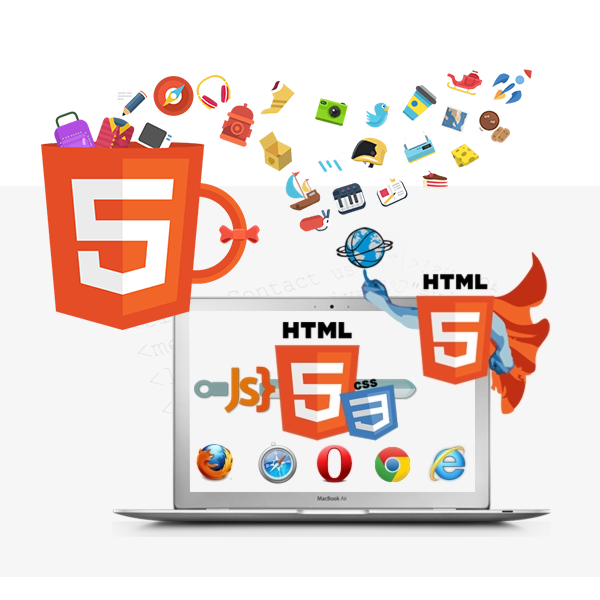Baeugi News Hub
Your source for the latest news and insightful articles.
HTML5: Where Code Meets Creativity
Discover the magic of HTML5! Unleash your creativity and learn how code transforms ideas into stunning web experiences.
Understanding the Basics: What is HTML5 and Why It Matters
HTML5 is the latest version of the Hypertext Markup Language, which is the standard language used to create and design documents on the World Wide Web. It introduces a wide range of new features and improvements over its predecessors, focusing on making web development easier and more efficient. Some of the key advancements include enhanced support for multimedia elements like audio and video, which allow developers to integrate rich media content without relying heavily on third-party plugins. Additionally, HTML5 offers new semantic elements like <article>, <section>, and <nav>, providing better structure and meaning to web pages, which is crucial for accessibility and SEO.
Understanding HTML5 is essential for anyone involved in web development, as it serves as the foundation for building modern web applications. By utilizing HTML5, developers can create more responsive and interactive websites that enhance the user experience. It also plays a significant role in SEO practices, as search engines favor sites that are built with clean and semantic markup. Furthermore, with the rise of mobile browsing, HTML5 enables developers to deliver optimized content across different devices and screen sizes, ensuring that audiences have a seamless experience, regardless of how they access the web.

10 Creative HTML5 Features That Will Transform Your Web Design
In today's fast-paced digital environment, leveraging HTML5 features has become essential for creating visually stunning and interactive web designs. One standout feature is the Canvas element, which enables developers to draw graphics on the fly using JavaScript. This capability transforms static images into dynamic visuals, making your website more engaging. Additionally, the Video and Audio tags allow seamless embedding of multimedia without relying on third-party plugins, enhancing user experience across various devices.
Another remarkable feature is the Geolocation API, which allows sites to retrieve user's location, enabling personalized content delivery. Coupled with the Web Storage API, HTML5 facilitates the storage of data locally within the user's browser, improving load times and enhancing performance. Furthermore, features like Responsive Design capabilities and SVG support ensure a website is not only beautiful but also adaptable to any screen size. Implementing these HTML5 features can significantly transform your web design and user engagement.
How HTML5 Enhances User Experience: Tips and Tricks for Developers
HTML5 has revolutionized the way we create and interact with websites, significantly enhancing the overall user experience. With its semantic tags like <header>, <footer>, and <article>, developers can structure content more meaningfully. This not only aids in SEO but also makes it easier for browsers and assistive technologies to interpret the page. Additionally, features such as the canvas element and audio/video support allow for richer media experiences directly within the browser, eliminating the need for third-party plug-ins and improving load times.
To maximize the benefits of HTML5, developers should consider implementing the following tips and tricks:
- Utilize semantic markup to improve accessibility and SEO.
- Leverage the local storage capabilities of HTML5 to enhance user session management.
- Incorporate responsive design techniques using
<picture>and<srcset>for better image handling across devices. - Experiment with interactive elements like the Web Workers and Web Sockets for a more dynamic user experience.